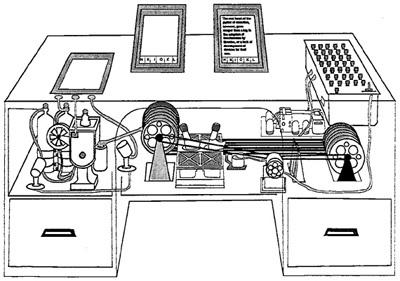 |
 |
|
Users + modes of information seeking Design Challenges for libraries |
A Brief History of Interface DesignThe emergence of Computer Interface Design can be traced to the 1960 publication of experimental psychologist J.C.R. Licklider's paper entitled Man-Computer Symbiosis (Negroponte, 1995). The next two decades saw little advancement, however. "Most IR systems in the 1970s and 1980s used structured command mode interfaces [and] required skilled intermediaries because of [their] complexity,” explain Ahmed, McKnight, & Oppenheim (2006, p. 157). It wasn't until the late 1980s and early 1990s that several IR systems introduced versions of their user interfaces for direct end-user searching; these included features like menu selection, form fill-in, drop downs, etc. (Ahmed, McKnight, & Oppenheim 2006, p. 157). One of the most notable inventions of the period was the National Centre for Supercomputing Applications' (NCSA) Mosaic, the first graphical multimedia interface to the World Wide Web (Morville, 2005). According to Morville, Mosaic "launched the Internet revolution that transformed our relationship with information systems" (Morville 2005, p. 49). In many ways, it marked the coming together of interactivity and sensory richness, two major aspects of design that had hitherto remained separate (Negroponte 1995, p. 95). Yet, studies continue to show that users still find IR systems "difficult to learn, use, and remember” (Ahmed, McKnight, & Oppenheim 2006, p.157). |
|||
|
||||
| |
||||
|
Search Interface: In Your Face |
